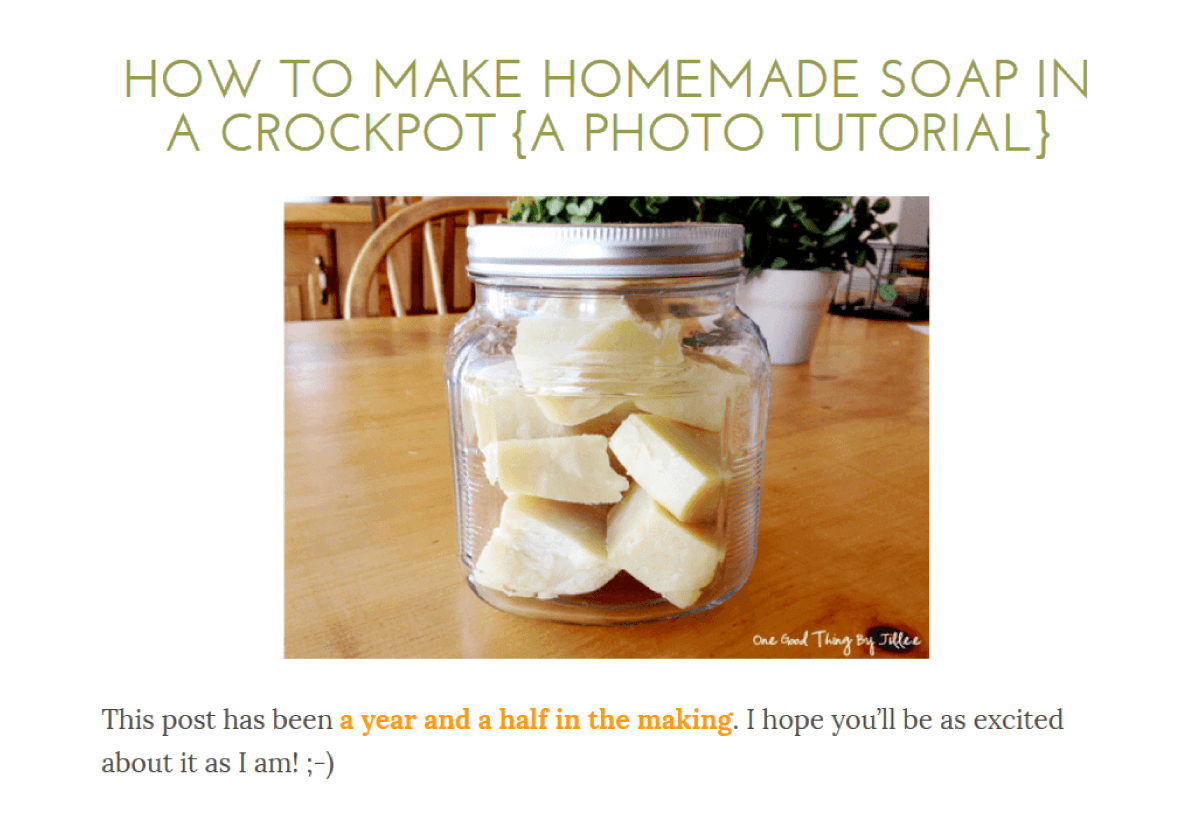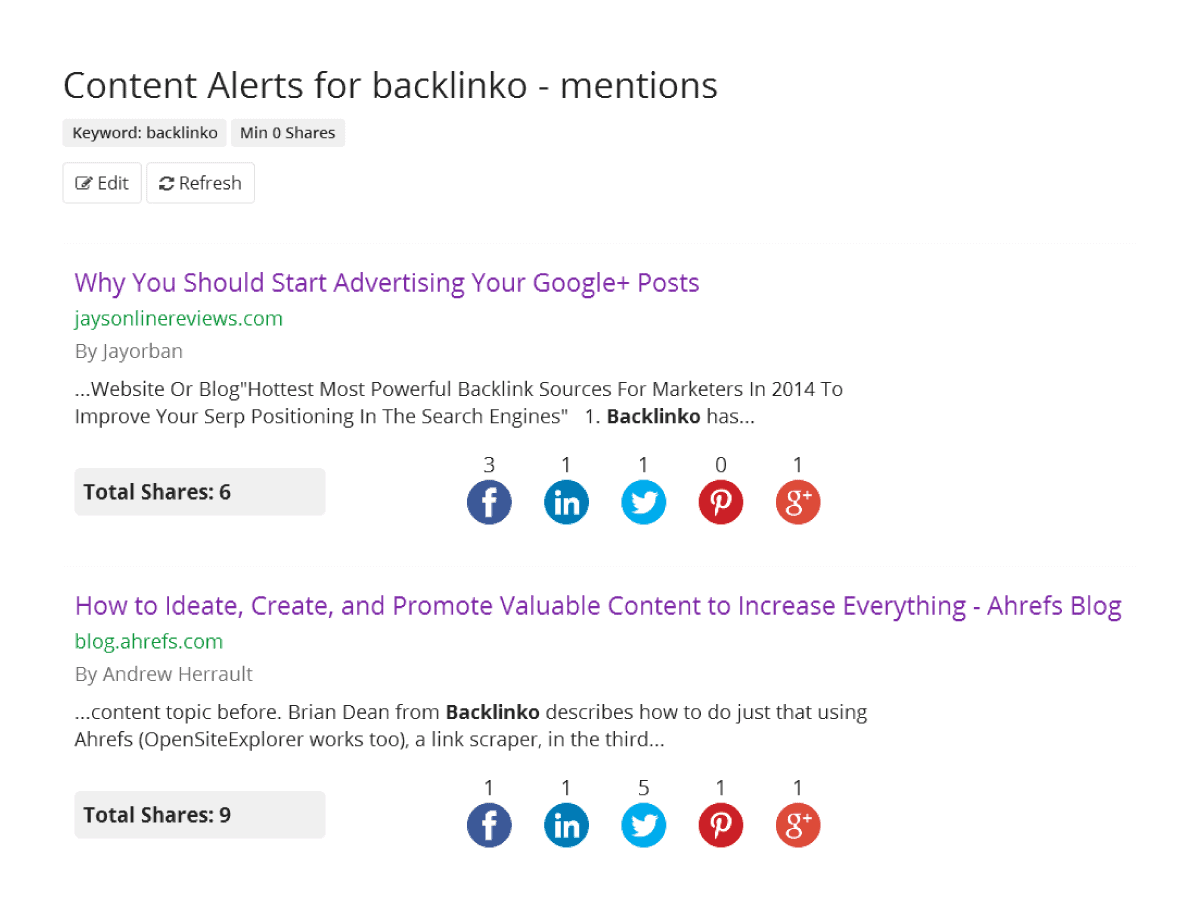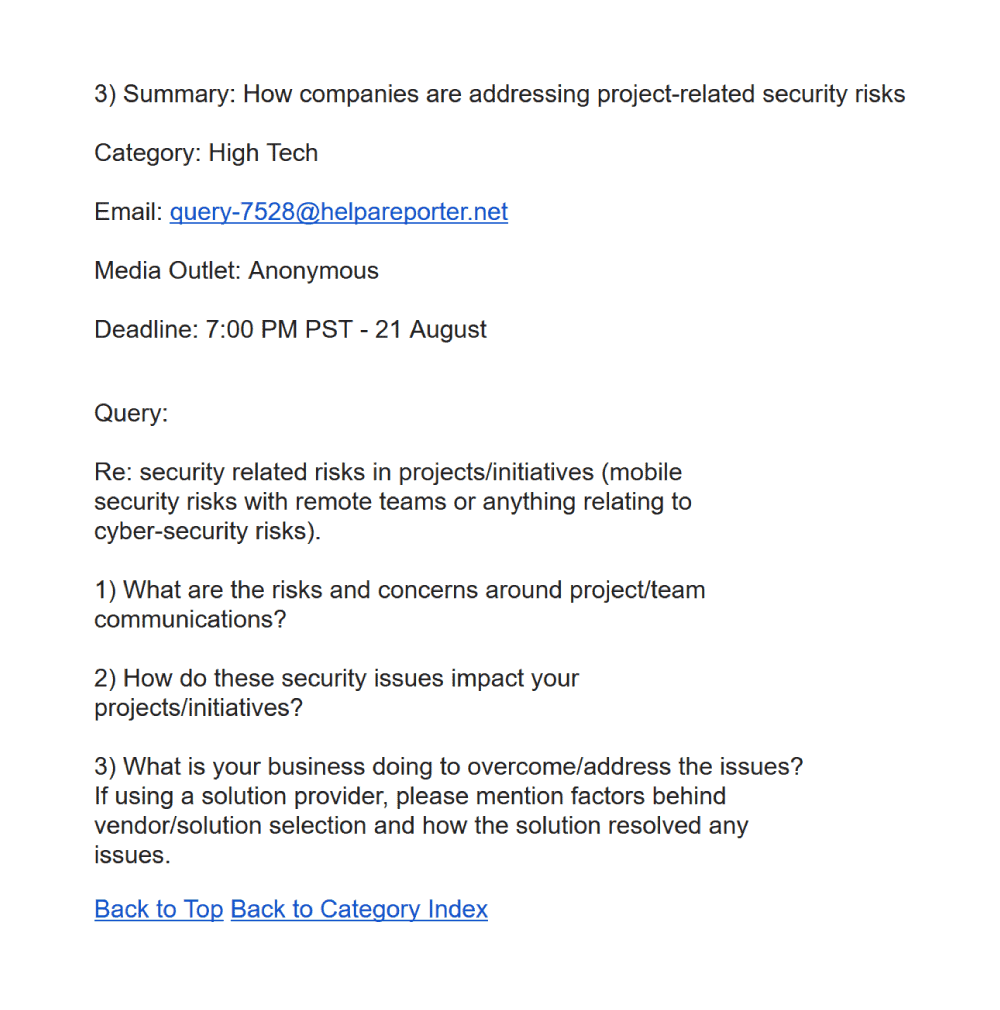
What Are Backlinks?
Backlinks (also known as “inbound links”, “incoming links” or “one way links”) are links from one website to a page on another website through an anchor text. Google and other major search engines consider backlinks “votes” for a specific page thus indicating relevance, quality, and authority to the web page. Pages with a high number of relevant backlinks tend to have high organic search engine rankings.

For example, here is a link from Forbes to my website.

Because that link points directly to a page on my website, it’s a “backlink”.
Why Are Backlinks Important?
Backlinks are basically votes from other websites. Each of these votes tells search engines: “This content is valuable, credible and useful”.
So the more of these “votes” you have, the higher your site will rank in Google and other search engines.

Using links in a search engine algorithm is nothing new. In fact, backlinks formed the foundation of Google’s original algorithm (known as “PageRank”).
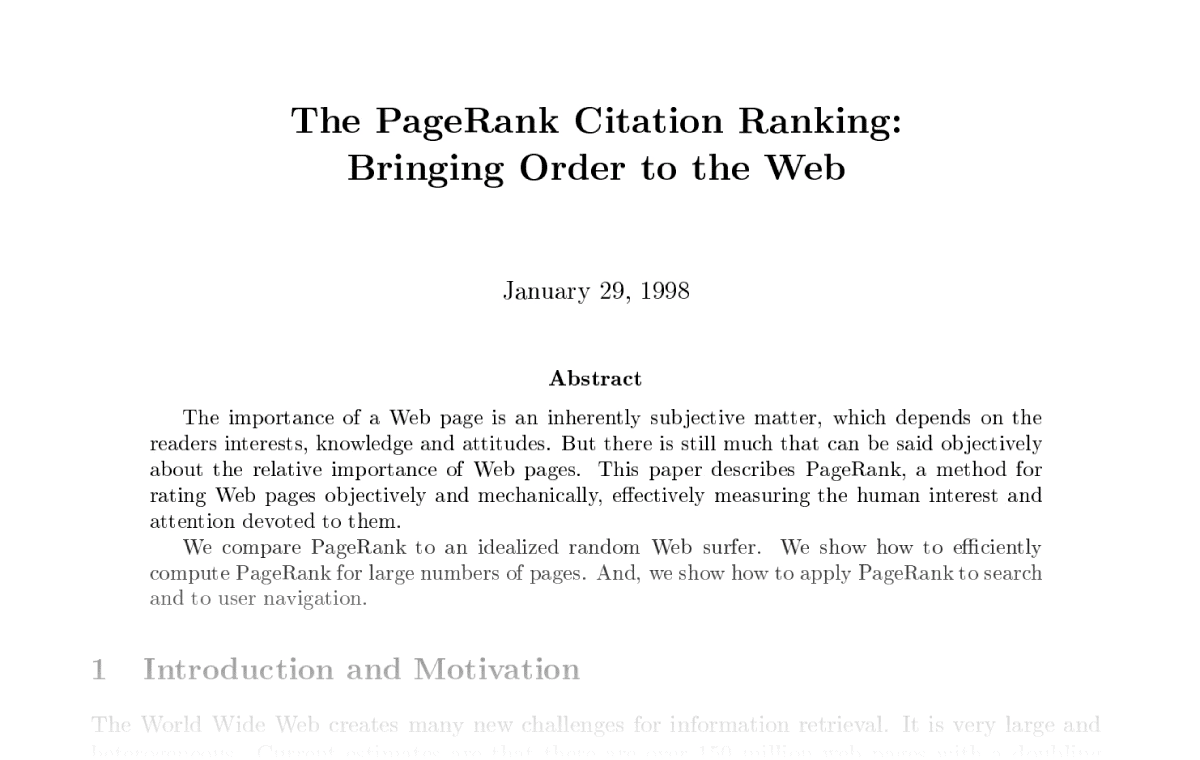
Even though Google has made thousands of changes to its algorithm since then, backlinks remain a key ranking signal.
For example, an industry study that we conducted found that links remain Google’s key ranking signal.

And Google has confirmed that backlinks remain one of their three most important search engine ranking factors.

What Types of Backlinks are Valuable?
Not all backlinks are created equal.
In other words, if you want to rank higher in the SERPs, focus on quality backlinks.
Put another way:
A single quality backlink can be more powerful than 1,000 low-quality backlinks.
As it turns out, high-quality backlinks tend to share the same key traits.
Trait #1: They Come From Trusted, Authoritative Websites
Would you rather get a backlink from Harvard… or a random guy’s website?
As it turns out, Google feels the same way.
This concept is known as “Domain Authority”. Essentially, the more authority a site has, the more authority it can pass on to your site (via a link).

For example, here’s a link that I got from TechCrunch.
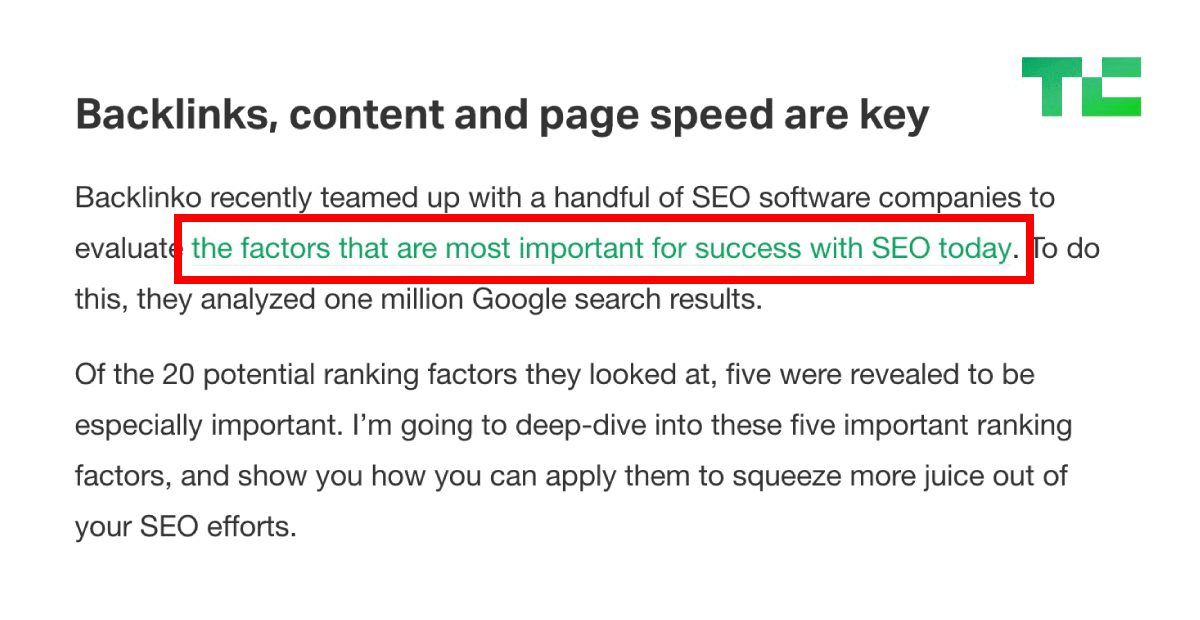
According to Semrush, TechCrunch is an extremely authoritative domain.
Because that link comes from an authority site, Google puts lots of weight on it. In fact, I noticed a boost in my organic search engine traffic right after TechCrunch linked to me.
Are these links hard to get? Definitely.
Are they worth it? Absolutely.
Trait #2: They Include Your Target Keyword In The Link’s Anchor Text
As a reminder, anchor text is the visible text part of a link.
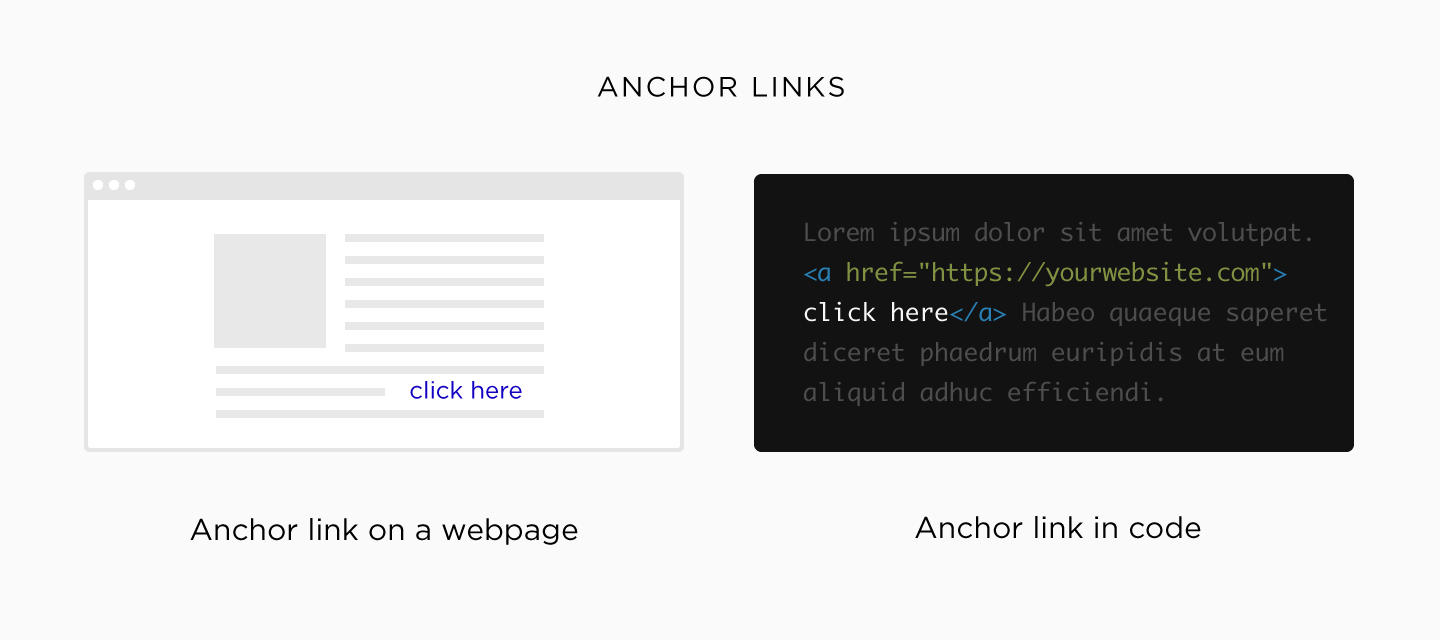
In general, you want your links to have anchor text that includes your target keyword.
In fact, a recent industry study found a correlation between keyword-rich anchor text and higher rankings for that keyword.

Now, a quick word of warning:
You don’t want to go overboard with keyword-rich anchor text. In fact, Google has a filter in their algorithm called “Google Penguin”.
Google Penguin filters out websites that use black hat link building strategies. And it specifically focuses on sites that build backlinks with exact match anchor text.
Trait #3: The Site (and Page) Linking to You Is Topically Related To Your Site
When a website links to another website, Google wants to see that the two sites are related.
This makes sense if you think about it:
Imagine you just published an article about running a marathon.
In that case, Google will put MUCH more weight on links from sites about marathons, running, fitness vs. sites about fishing, unicycles, and digital marketing.

Trait #4: The Link Is a “Dofollow” Link
Google and other search engines ignore links with the “nofollow” tag attached to it.

(In other words, nofollow links don’t count search engine ranking algorithms).
Fortunately, the vast majority of links on the web are “dofollow” links.
And most of the links that have the nofollow tag aren’t that valuable to begin with. For example, links from these sources tend to be nofollow:
These links aren’t super helpful for SEO anyway, so it’s not a big deal that they’re nofollow.
Trait #5: The Link Is From a Domain That Hasn’t Linked to You Before
Let’s say you get a link from Website A.
Great.
Well, let’s say Website A links to you again. And again. And again.
Are the 2nd, 3rd and 4th links as powerful as the first one?
No.
As it turns out, links from the same website have diminishing returns.

Or put another way:
It’s usually better to get 100 links from 100 different websites than 1,000 links from the same website.
In fact, our search engine ranking correlation study found that the number of sites linking to you (not the total number of backlinks) correlated with Google rankings more than any other factor.

Now that you’ve seen what types of backlinks are the most helpful for your Google rankings, it’s time for me to show you how to start building them.
Best Practices
Create a Linkable Assets
If you want people to link to your website, you need something on your site worth linking to.
(Also known as “Linkable Assets”).
A Linkable Asset can be a blog post, a video, a piece of software, a quiz, a survey… basically anything that people will want to link to.
In most cases, your linkable asset will be an amazing piece of content (which is why search engine optimization and content marketing are so closely tied together).
For example, when I first started my blog, I published this list of 200+ Google ranking factors.
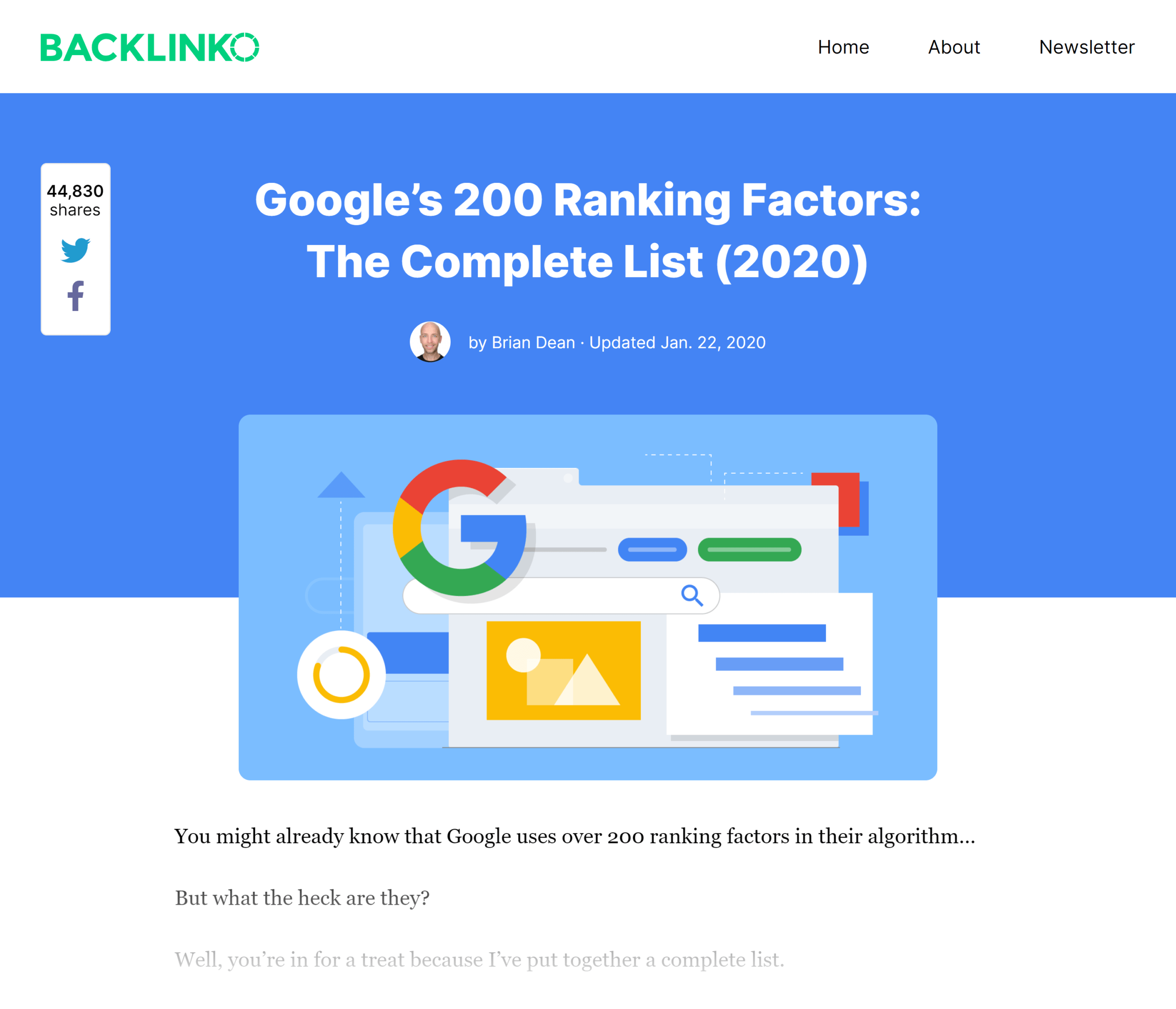
One day I read that Google uses 200 ranking signals. Which made me curious: “What are these 200 signals?”.
Of course, Google wasn’t about to announce them to the world. So I started compiling statements from Google and patents that I found online.
Compiling these 200 factors was extremely time-consuming (it took me over 2 weeks). But in the end, I FINALLY compiled a list of 200 ranking factors that Google might use in their algorithm.
To date, this single piece of content has generated over 25,800 backlinks from 5,870 domains.

How about another example?
One of my most successful posts to date (in terms of backlinks and organic traffic) is my ultimate guide to YouTube SEO.

When I started writing this post I was starting to have some success with YouTube marketing. So I decided to compile and share what I learned in the form of an ultimate guide.
I also decided to include a lot of examples in my guide:

(Something that most of the other content on this topic lacked)
Even though this post hasn’t generated nearly the same amount of links as my Google Ranking Factors post, it’s still racked up quite a few backlinks.

Build Backlinks from Link Roundups
Imagine if people published blog posts with the sole purpose of linking out to quality content.
(The type of quality content that you publish on your site already)
It’d be pretty great, right?
Fortunately, that’s a real thing. And they’re called link roundups.
Here’s an example:
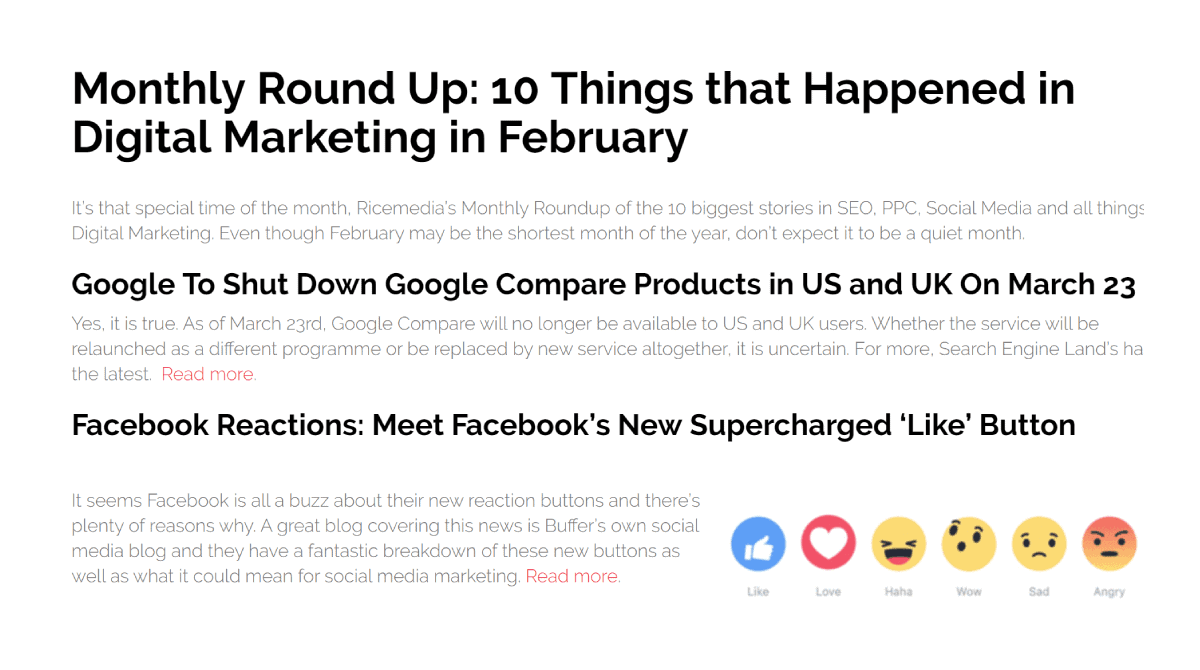
Link roundups are daily, weekly or monthly blog posts that link to outstanding content.
Here’s an example of a backlink that I recently built from a roundup:
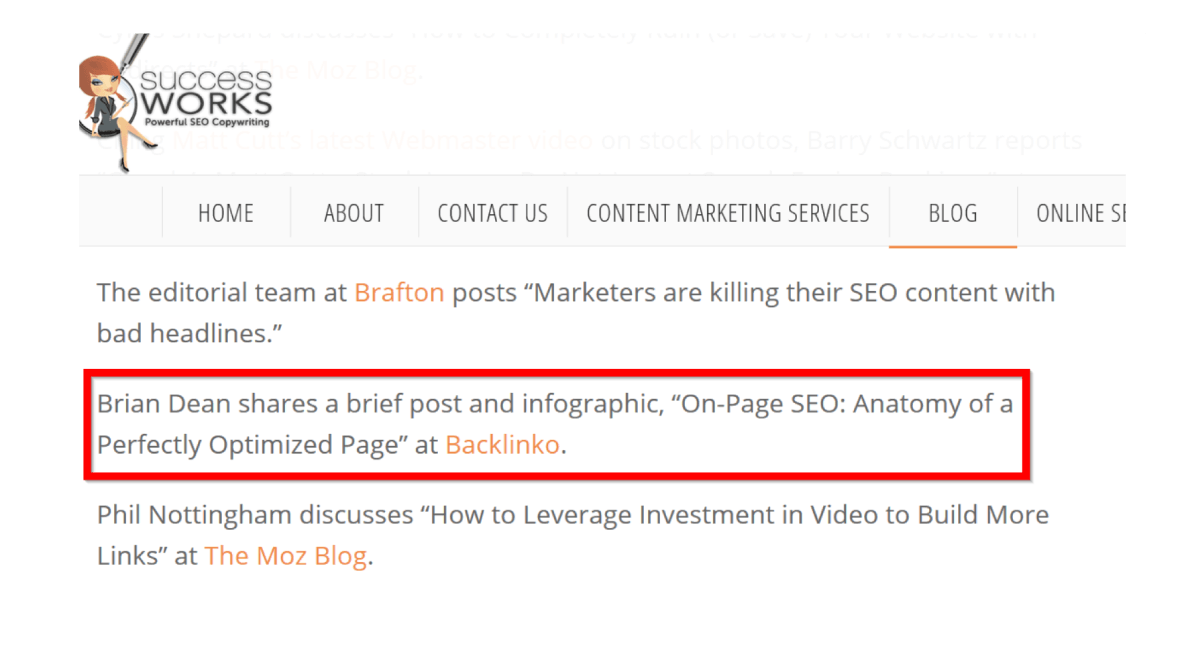
Here’s the step-by-step process.
- Find Link Roundups In Your Niche: Use search strings in Google search, like ““Keyword” + “link roundup”.
- Pitch Your Resource: (Gently) suggest that they include your linkable asset to the roundup.
And if your post is a good fit for that person’s roundup, you’ll get a high-quality link.
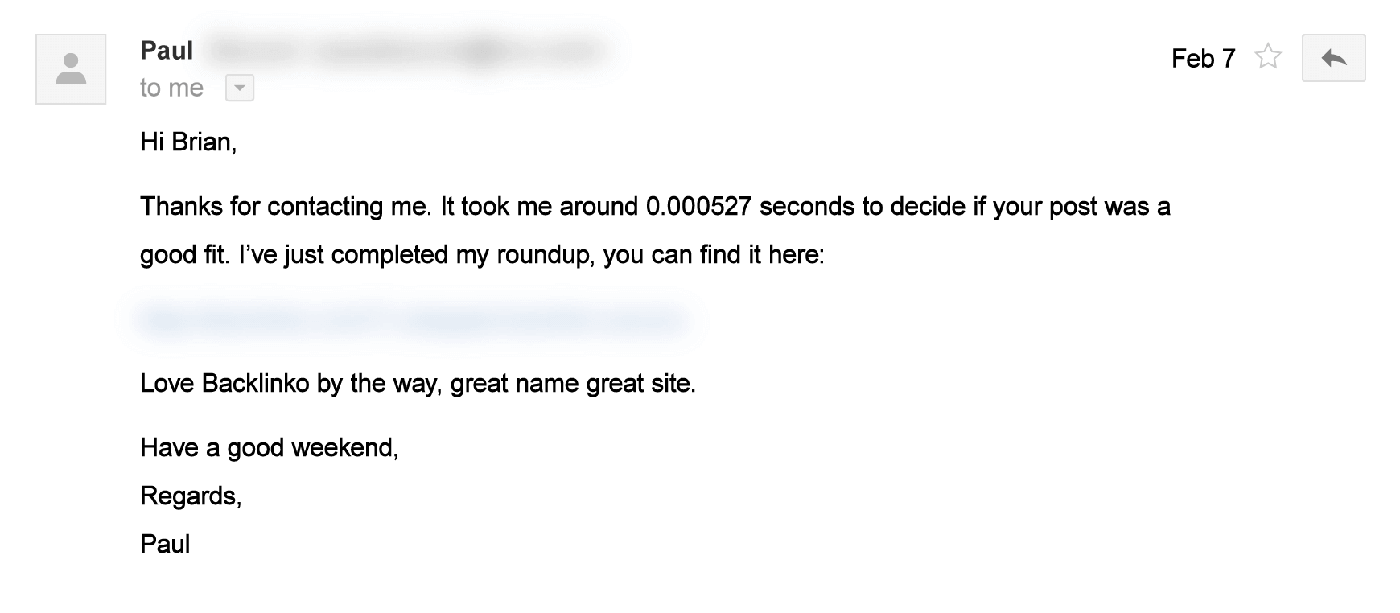
(They may also share your content on social media)
Use The Moving Man Method
Here is the 3-step process:
- First, you find web pages, resources or businesses that are outdated, rebranded or recently changed names.
- Then, find the sites that are still linking to these outdated resources.
- Finally, you email people to let them know that they’re linking to something that’s out of date.
Let me show you how this works with a real-life example…
A while back I read that a website for a big SEO agency website suddenly shut down.
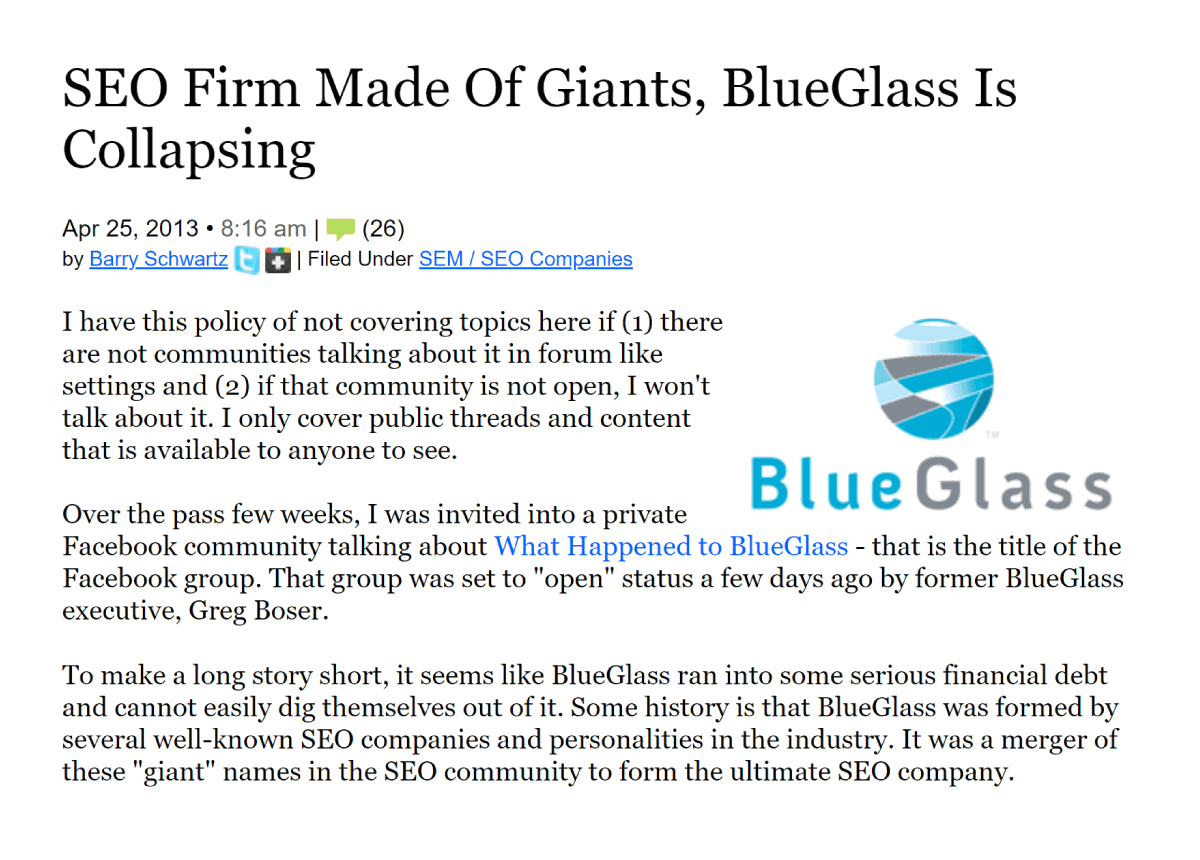
This meant that they had lots of pages on their site that weren’t working anymore…
…pages that lots of people were still linking to.
Specifically, I noticed that an infographic about SEO on their site wasn’t working anymore. Which was perfect, because I had just published my own SEO-focused infographic.
So that was the first step.
Next, I had to see who actually linked to that infographic.
So I fired up Semrush and pulled all of their links:
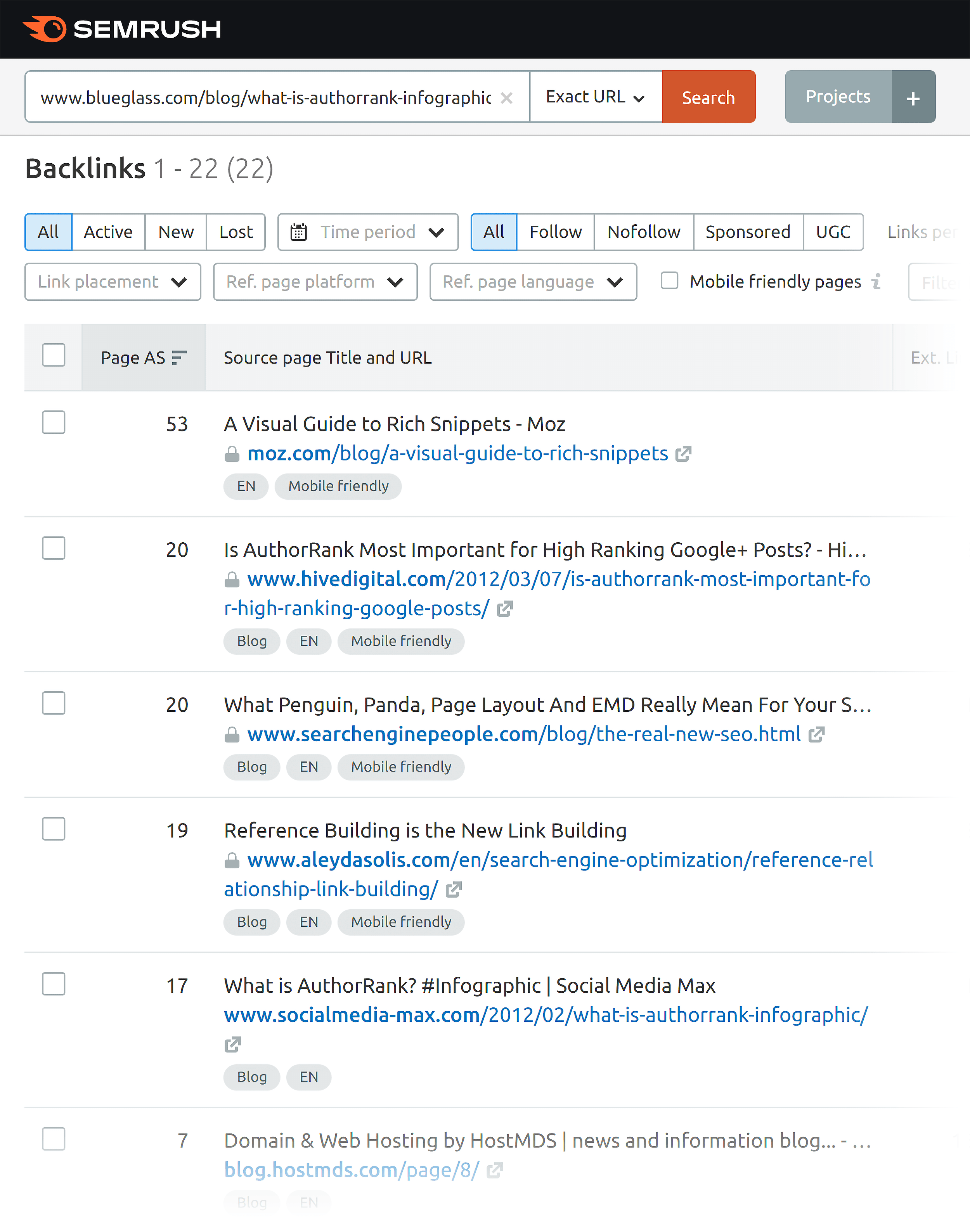
Finally, I emailed everyone that linked to the infographic to let them know the image wasn’t working anymore. I also let them know that my infographic would make a great replacement for the BlueGlass one.
Here’s the script I used:
Hi [Name],
I was searching for some content to read about [Topic] this morning. And I came across your excellent post: [Post Title].
Anyway, I couldn’t help but notice that you mentioned [Outdated Resource] in your article.
As you may have heard, [Problem With Outdated Resource].
Here’s a screenshot of where that link is located: [Screenshot]
Also, I recently published a piece of content about [Topic]. It might make a good replacement for the [Outdated Resource].
Either way, I hope this helps you and have a great day!
Thanks,
[Your Name]
As you can see, people were more than happy to link to me:

Broken Link Building
This strategy is similar to the Moving Man Method you just learned about.
The difference is that with broken link building, you’re only looking for pages that have 404 errors.
To find these 404 links, you want to focus on resource pages in your niche. So if you’re in the fitness niche you’d search in Google using these search strings:
- “fitness” + “resource page”
- “fitness” + “resources”
- “fitness” + “recommended sites”
- “fitness” + “links”
And you’d find pages like this.

Now you could email the site owner and ask for a link. But I’ve found that begging doesn’t work very well.
Instead, let the site owner know about any broken links that you find.
You can easily find broken links on any page. Just use the nifty Check My Links Chrome Extension.
This program quickly finds any broken links the page happens to have. It also highlights them in red to make them easy to find:

The last thing you need to do is email the site owner about their dead link.
Hi [Site Owner Name],
I was just browsing around your resources page today, and among the lists of great resources, were some broken links.
Here’s a few of them:
[URL 1]
[URL 2]
[URL 3]
Oh, and I have a website, [Your Website], that also regularly posts quality content related to whatever. If you think so too, feel free to post a link to it on your resources page.
Either way I hope this helps and keep up the good work!
Thanks,
[Your Name]
Guest Posting
Is guest posting dead?
Not really.
In fact, when you’re first starting out, guest blogging is one of the BEST ways to get links to your site.
In fact, when I first started Backlinko, I wrote over 50 guest posts and interviews in 12 months!

And the links I got from guest posting definitely gave my organic traffic a boost.
That said, I was very strategic about things. I made sure to only write guest posts for quality sites in my niche.
So if you run a site about the Paleo Diet, and write a guest post on a site about iPhones, that’s going to look spammy to Google.
But when you write mind-blowing guest posts for quality websites in your industry, those links DO help.
The thing is, finding places to guest post can be a HUGE pain.
But there’s an easier way…
Here’s how it works:
First, find someone in your industry that writes a lot of guest posts.
Next, go to one of their published guest posts. And grab the headshot they use in their author bio:
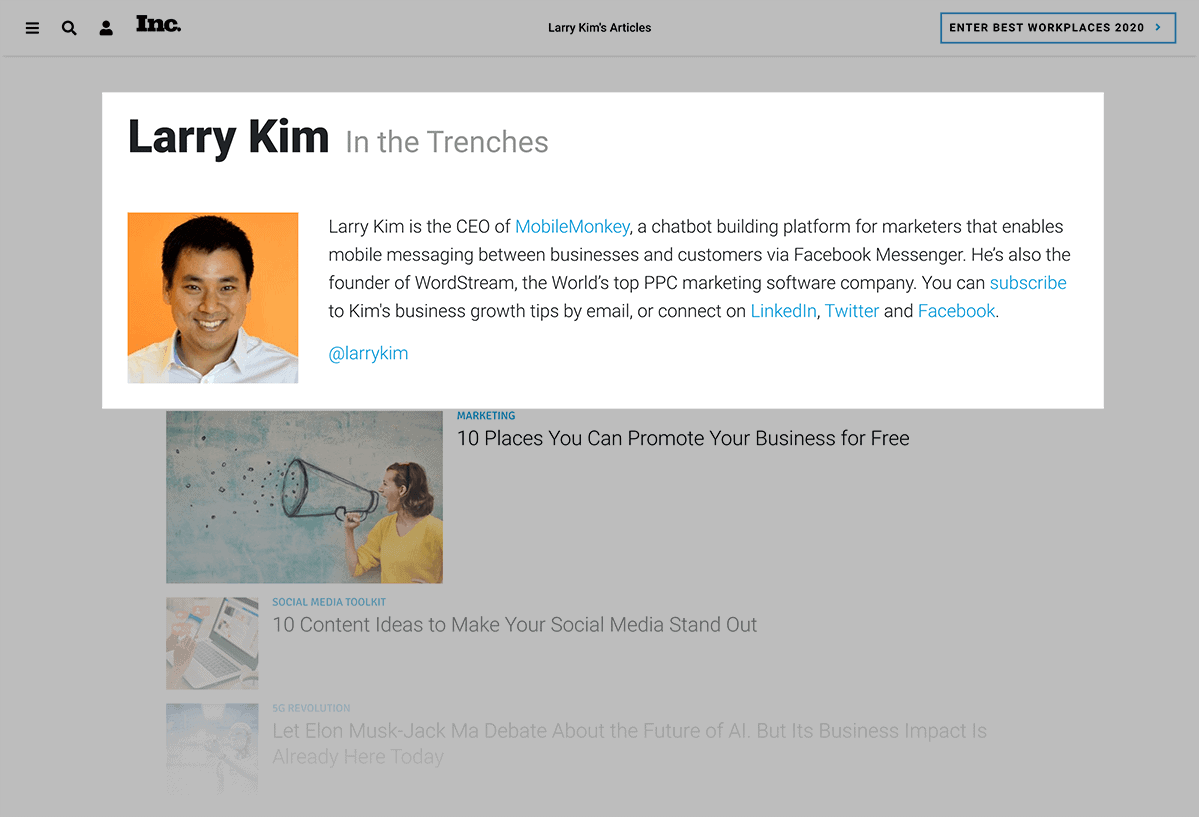
Finally, pop the URL of that screenshot into Google reverse image search.
And you’ll get a list of places that published guest posts on.

Infographics and Other Visual Assets
Do infographics work as well as they used to? Probably not.
But they’re still an effective link building strategy.
In fact, when we looked at what types of content generate the most links, infographics came out near the top.

For example, one of the first infographics I ever made took only took a few hours to put together (I also hired a professional designer to make it look professional).

Even though this infographic didn’t go viral, it led to some solid backlinks:

To be clear: I didn’t just publish my infographic and hope for the best.
Like any piece of content that you publish, you need to strategically promote your infographic. And to do that, I recommend using a strategy called “Guestographics”.
I outline exactly how Guestographics work in this post.
Submit Testimonials
Companies big and small love to show off customer testimonials.
And you’re using a product or service that you love (or at least like), consider sending them a testimonial.
To show that you’re a real person they’ll often add a link to your website… without you even having to ask.
Here’s an example:
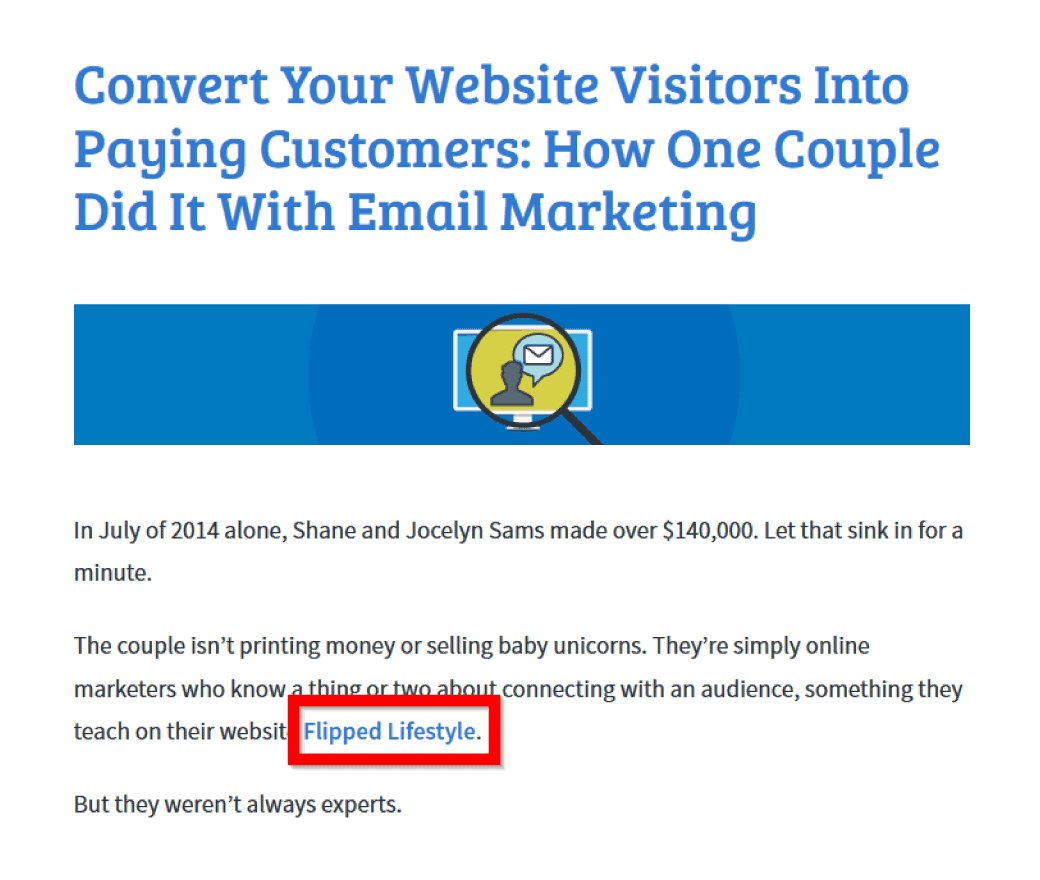
Blogger Reviews
If you have a piece of software, physical product, consulting service or ANYTHING of value that you sell, you can easily turn that into dozens of high-quality backlinks.
How?
By offering your product to bloggers for free.
Here’s how:
- Find bloggers in your niche that might be interested in what you have to offer. If you sell an information product that teaches people how to make their own soaps, you’d Google things like “soap making”, “make soap at home” etc.
- Your results will be a mixed bag of blogs, news websites and “how to” websites like eHow. Filter out how-to sites or news sites. You’ll be left with a solid list bloggers that might be interested in your offer, like this one:
- Reach out to them with this email script:
Hey [Site Owner Name],
I was searching for [Some Homemade Soap Recipes] today when I came across [Website].
Awesome stuff!
Actually, I just launched a guide that [Teaches People How To Make Luxury Soaps At Home]. I usually charge [$X], but I’d be more than happy to send it over to you on the house.
Let me know how that sounds.
Cheers,
[Your First Name]
One word of warning: You want to be VERY careful about the language you use for this strategy.
Note how you don’t offer your product in exchange for a link or review… which would violate Google’s Webmaster Guidelines.
Instead, send them the product and let them decide if it’s worth a mention on their blog.
Link Reclamation
Link reclamation is simple:
First, find mentions of your company that don’t link to your site.
Here’s an example:

See how the author of that article above mentioned my website… but didn’t link to it?
That’s where link reclamation comes into play.
Instead of saying “I wish they linked to me”, you proactively reach out and ask them to link.
In my experience, a friendly reminder is usually enough to get most people to log into WordPress and add your link.
Here’s the step-by-step process:
- Use a tool like BuzzSumo and Mention.com to find mentions of your brand online.
When you do, you’ll get a heads up whenever someone writes about you:
- Check to see whether or not the person that mentioned you also linked back to your site (either your homepage or internal page). If they linked to your site, you’re set.
If not, move onto step #3…
- Send them this friendly email. Hey [Name],
I just wanted to reach out and say “thanks” for mentioning [Your Brand] in your excellent article yesterday.
We really, really appreciate it.
I’m reaching out today to ask if you could add a link back to our site. That way, people can easily find us while reading your article.
Either way, thanks for the shout out and keep up the great work!
Thanks,
[Your First Name]
Use HARO
HARO (short for Help a Reporter Out) is one of the best ways to get high authority backlinks from news sites.
Here’s how HARO works:
- Sign Up To HARO as a source here.
- You’ll get three emails per day from reporters looking for sources, like this one:
- Respond with your credentials and some helpful tips.
Easy right? You give a reporter a quote and they’ll hook you up with a backlink.
That’s all there is to it.
For example, recently got a sweet link from Entrepreneur.com by replying to a HARO request:

Reverse Engineer Your Competitor’s Backlinks
Every industry has its own set of link building opportunities.
So I recommend setting aside some time to reverse engineer your competition. That way, you can find link opportunities that only exist in your niche.
How about an example?
Let’s say you run a health and fitness blog.
And one of your competitors is Nerd Fitness.
Well, when I check out that site’s link profile in a backlink checker, I notice that A LOT of their links come from podcasts:

Specifically, people from that company (especially the founder, Steve Kamb) appear on other people’s podcasts as guests.
Just like that you have a nice list of places that you can go to get links.
(Obviously, you need to reach out to the people that run those podcasts and pitch yourself as a guest. Which takes work. But at least you know where to start).
Stick to Content Formats That Generate Links
Like I mentioned earlier, infographics are one content format that’s ideal for building backlinks.
But it’s one of many.
We also found that, even though they didn’t generate lots of social media shares, “Why posts” and “What posts” tended to get linked-to fairly often.

Learn More
Link Building: How to Get Powerful Backlinks: Video tutorial that shows you how to build backlinks to your site using white hat SEO techniques.
How to Get High Quality Backlinks (7 New Strategies): This is an updated list of link building strategies that focus on building new backlinks from authority websites.
15 Awesome Link Building Tools: If you’re serious about link building, you’ll need tools to help you do the job. Here’s a list of the best of the bunch.
How to Do a Basic Backlink Analysis on Your Competitors: Learn how to evaluate your competitors backlinks.


